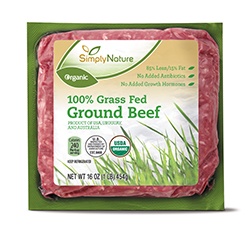Grocery Wars Heat Up; Millennial Shoppers Embrace Store Brands
by January 18, 2016 12:03 am 143 views

Millennial Grocery Shoppers Embrace Private Labels
Americans are changing the way they eat and shop, and the all-important Millennials might prove to be the pickiest eaters of them all.
In 2015, most food and beverage manufacturers saw flat or declining sales, because consumers continue to seek fresh foods and simple options, according to a recent Marketing Daily piece on the online content company MediaPost.
What’s happening? A perfect storm of increased interest in whole, fresh foods combined with a surprising change in how the public views store brands.
In the past, private-label items were generally considered by consumers to be of low quality. People purchased a private-label or store brand because they couldn’t afford a brand-name item.
This perception has changed, however. The MediaPost article goes on to explain that a 2015 survey by the market research firm Mintel showed that 40 percent of shoppers believed private-label products were more innovative than major brands, although the older consumers surveyed were less convinced perceiving private-label foods as “generic or inconsistent in quality.”
The younger generation is fond of shopping at Trader Joe’s and Aldi, both of which are known for offering high-quality, private-label brands. In addition to selling products that taste good, both companies label their products such that consumers can identify whether a product meets specific dietary requirements, such as gluten-free or vegan. In addition, Aldi announced in October of 2015 that it was removing a number of additives from its products, including artificial dyes and MSG.
For consumer packaged goods companies, the recent turnaround in public perception of private labels presents a challenge, but also an opportunity. By looking at what Millennials like about private-label brands (innovative recipes, ingredient transparency), suppliers can develop products that meet consumer demands, and then market them via popular social media channels. With an increase in options from both retailers and major brands, consumers of all ages might benefit from this sea-change in how Americans shop for food.
Analysts: 2016 is the Year of M-Commerce
While there is no doubt that consumers have become increasingly attached to their smartphones, shoppers have historically used their desktop or laptop computers to make online purchases. But all that may soon change.
“[Software company] Adobe found smartphones generated a record 22 percent share of all online sales on Black Friday, 70 percent more than in 2014,” reported Tom Ryan at RetailWire. “Tablets drove 15 percent of online sales on Black Friday, a 2 percent decrease year-over-year. For Cyber Monday, [international technology company] IBM found smartphones drove 15.2 percent of online sales, up nearly 70 percent over 2014 and exceeding tablets at 12.4 percent.”
In fact, a recent report from the comparison shopping site Bizrate shows m-commerce (mobile commerce) is projected to grow by 68 percent in 2016, and analysts say mobile purchases may comprise up to 42 percent of Internet sales during peak volume in the 2016 holiday season. Bizrate’s report also indicates that these numbers do not include in-app purchases.
What does this mean for retailers and suppliers? In the report, Hayley Silver, vice president of insights at Bizrate stated: “Retailers — in fact all consumer-facing brands — need to ensure that their online experience and all core actions work properly and intuitively on iPhones, Android phones, and iPads. Prioritize development projects and quality-assurance tasks based on your customer experience and satisfaction by device, operating system and browser.”
The tablet experience is still important, but those sales are stagnating, according to reports, and the smartphone should be a priority, according to analysts. And companies cannot rely on apps to deliver this experience, as customers expect to have a smooth experience on the mobile site itself.
Grocery War Tactics Include Acquisitions, Technology
Grocery shopping isn’t what it used to be. Big data allows grocers to custom-tailor assortments to suit local shopper’s needs while technology expands consumer options (i.e., price-matching apps, printable coupons, online shopping). While consumers still appreciate a quality in-store experience involving cooking demonstrations, sampling and even live music, the omnichannel experience is paramount.
Recent news stories have focused on how major grocers are approaching the need to improve their online appeal. Kroger, for example, made two strategic mergers in 2014 that greatly enhanced its omnichannel game. Harris Teeter provided Kroger with the technology to support online ordering and in-store pickup while Vitacost provided the structure needed to support home delivery.
And it has the tools to manage big data, which will be key in Kroger’s e-commerce business moving forward, according to a recent Business Insider piece.
Meanwhile, a Charlotte Business Journal article notes that the Florida-based supermarket chain Publix has its hands full with potential threats from both Amazon and Wal-Mart Stores Inc.
The problem? Consumers are embracing online offering and home delivery of groceries, a service that Publix currently doesn’t offer, although it once did.
According to the article, Publix was a pioneer of online grocery shopping, testing the concept in the late 1990s, but it failed to be as profitable as the company would have liked.
Timing is indeed everything, apparently.
